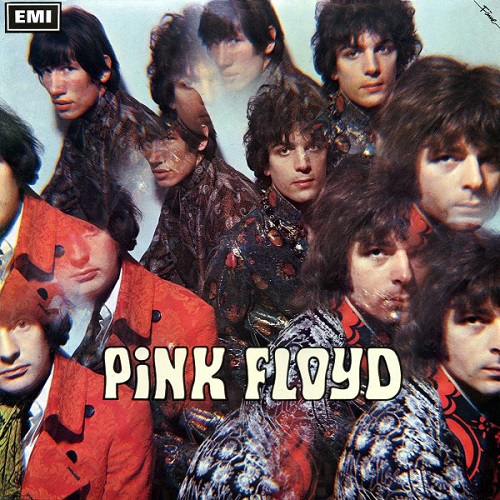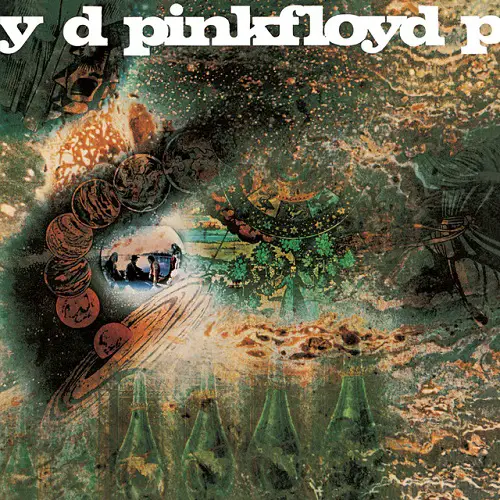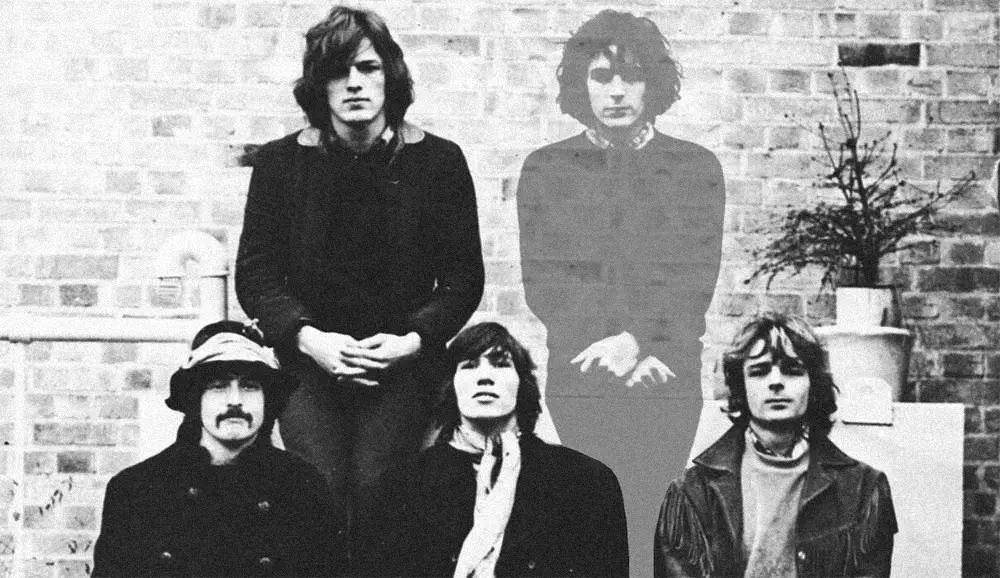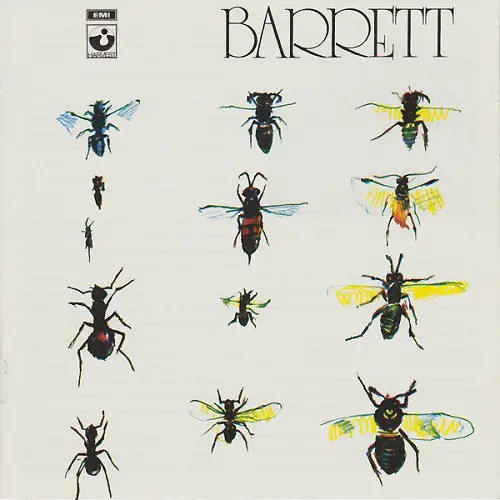[dropcap size=big]I[/dropcap]f anybody in modern music is taken as a stereotype of the genius/weirdness combination it is late Roger Keith “Syd” Barrett, a founder and brief mailman of Pink Floyd, solo artist, painter, and recluse – often most of these things at the same time. If you just take into consideration the volume of the body of (musical) work he left behind, he should not have been more than just a footnote in rock history. He composed and played on all but one song on the debut Pink Floyd album, a few singles, a “one and a half” songs on their second album, two solo albums and a set of scattered demos that were released on one occasion – most of which were of debatable sound quality (Opel).

Still, Pink Floyd themselves not only devoted “Shine On You Crazy Diamond”, one of their best songs, to Barrett but Wish You Were Here was practically devoted to him and members of the band played on both The Madcap Laughs and Barrett, his two solo albums. That’s quite a lot for someone that was literally kicked out of the band prior.
…Roger Keith “Syd” Barrett a founder and brief mailman of Pink Floyd, solo artist, painter, and recluse, often most of these things at the same time.
Even more so, Barrett is considered a progenitor of many things rock, particularly its psychedelic side, so much so, that in fifty years or so, his cult following has never diminished, many musicians themselves still citing him as a key influence. Again, quite a lot for an artist who practically came up with no music after 1970 and who from then on for most of his life until his death in 2006 was a recluse that avoided even his neighbors.
The Man Who Made Psychedelia What It Is
Barrett might not be the first rock musician that exhibited more than erratic behavior and certainly not one of the rare examples of somebody whom extensive drug use left both visible and audible consequences, but he’s certainly one that is most referenced for both.
…as soon as his musical and compositional skills evolved, so did the use of LSD, which coincided with the formation of Floyd in the mid-’60s.
It started early on, with multiple versions on how he became known as Syd, with the two most cited being that he got it for his musical skill exhibited in his early teens, and being named after Sid, a known jazz musician in his hometown of Cambridge, England. Barrett himself changed it to Syd, as to differentiate himself from the jazzer. The other prominent version is more in line with what Barrett was known for – he came to a scouts meeting with a flat cap instead of a scout beret (an inspiration for Prince’s “Raspberry Beret”?), Syd being “a working-class name”.
Barrett got deep into music after his father’s death, his school friend, and later Floyd co-founder Roger Waters encouraging him on. Soon (1963) he started composing, often playing acoustic gigs with David Gilmour, his later replacement in Pink Floyd. But as soon as his musical and compositional skills evolved, so did the use of LSD, which coincided with the formation of Floyd in the mid-’60s.

The band started out as a cover band focusing on R&B, slowly involving jazz-influenced improvisations, mostly under Barrett’s guidance, who, as a heavy reader, also got into fairy tales at the time – Alice in Wonderland, Tolkien, Carlos Castaneda, and Eastern mysticism. In a way, these became influences and trademarks for what is labelled as British psychedelia.
The band’s underground fame was cemented by Tonite Let’s All Make Love in London, a film that is considered to be the key catalyst in making psychedelia a world phenomenon.
At that time Pink Floyd and their residence at London’s UFO club, became a synonym for ‘London Underground’ and their playlist and songs that became their initial singles and The Piper At The Gates Of Dawn, their debut album, was, bar a few exceptions, composed and sung by Barrett, who at the time also had lead guitar duties. The band’s underground fame was cemented by Tonite Let’s All Make Love in London, a film that is considered to be the key catalyst in making psychedelia a world phenomenon. Pink Floyd was featured playing one of their classics – Barrett’s “Interstellar Overdrive” and “Nick’s Boogie”, one of the rare non-Barrett compositions at the time.
Barrett wrote the band’s first three singles (“Arnold Layne”, “See Emily Play”, “Apples And Oranges”) and practically all except one of the songs on their debut album, all released in 1967 and all generally considered psychedelic and rock classics – inspirational sparks for psychedelia to turn from a small flame to a musical wildfire. Along with that, Barrett is contributed with quite a few playing innovations including the introduction of distortion and feedback in the guitar sound, his technique of plugging his guitar into an echo box and sliding a Zippo lighter down a fretboard are often cited by many accomplished guitar players.
Barrett wrote the band’s first three singles (“Arnold Layne”, “See Emily Play”, “Apples And Oranges”) and practically all except one of the songs on their debut album…
Tarnish on the Diamond
As 1968 swung in with all its changes, so did the changes in Barrett’s behavior. His drug use became heavier, and there were speculations that he suffered from schizophrenia (with his family then and still denying any such or similar health issues). He did express signs of depression, experienced hallucinations, had memory lapses, would disappear for days, and even had periods of catatonia.
It all started creeping into Floyd public and live performances, with Barrett often detuning his guitar during songs, strumming a single chord, or not playing at all. His strange appearances on American Bandstand and The Pat Boone Show, remain recorded to this day. The rest of the band were growing both tired and embarrassed with Barrett’s antics. It seems that the straw that broke the camel’s back was the story recalled by Roger Waters when Barrett came to a practice session with a new song called “Have You Got It Yet?”. Seemingly simple at first, it turned impossible to learn for the rest of the band, as Barrett kept changing the arrangement mid-song, singing, “Have You Got It Yet?”
…Barrett was kicked out of the band. Still, nobody had the heart to tell him. The band simply evaded him when they went to gigs and during the recording of the second album…

By A Saucerful of Secrets, Floyd’s second album, Barrett was kicked out of the band. Still, nobody had the heart to tell him. The band simply evaded him when they went to gigs and during the recording of the second album let him sit in the recording studio’s reception area, waiting to be invited in. One of his songs, “Jugband Blues” did make it to the album, two others were discarded as too dark and only made it to latter-day compilations. Barrett only realized he was fired, when the band issued an official statement in April 1968, Barrett cropping up at Floyd gigs, later on, sending stares at his replacement and old friend David Gilmour.
Between being kicked out of the band and his two official solo albums, Barrett’s behavior got even more erratic, to the point that he ended up in psychiatric care in Cambridge. The most re-told freak incident was when on one occasion he told his flatmate that he is going out for a drive, while he actually tried to follow Pink Floyd for gigs in Ibiza, with Barrett supposedly skipping airport security, ending up trying to stop the plane the band was in.

Flashes of Brilliance and Eternal Frustration
Barrett’s two solo albums from 1970, which actually include playing from his former bandmates, Roger Waters and David Gilmour, among others, are at the same time flashes of brilliance (his natural melodic touch and inventiveness) and the result of chaotic recording sessions, often ending up in complete shambles – all reflected in the sound of the two albums. The whole situation is best described by the two Floyd members participating: Gilmour saying that, “perhaps they were trying to punish him”, while Waters stating that “Syd is a genius”, both of them hitting the point. The things got even weirder during the recording of Barrett when it is said that Syd would not play the same song twice, or would start changing elements in mid-session.
…some of the most idiosyncratic music to have reached a wider audience, with Barrett exhibiting both the elements of his genius but also of his drug-drenched erratic behavior.
What ended up being released on those two albums goes down as some of the most idiosyncratic music to have reached a wider audience, with Barrett exhibiting both the elements of his genius but also of his drug-drenched erratic behavior. In the end, the albums still remain as flagships of psychedelic-pop, often characterized as the first true lo-fi albums.

After the two albums, except a brief and unsuccessful attempt to play in another band (named Stars), Barrett more or less disappeared, ending up in his mother’s house in Cambridge (it is said that he walked 50 miles from London to Cambridge on his way back in 1978), devoting himself to painting and gardening and avoiding any encounters with the wider public. He obviously continued to follow what was going on with Pink Floyd, as he suddenly showed up at the recording sessions for Wish You Were Here when the band was doing a final remix of “Shine On You Crazy Diamond”, the song definitely devoted to him. Barrett died of pancreatic cancer in July of 2006.
No matter how controversial his contributions to rock are, he is cited as massively influential by almost everybody – from his former band and its members, Paul McCartney and David Bowie, to bunkers like Sex Pistols and The Damned, name-checking continuing to this day with modern psych artists always having Barrett’s name on the tips of their tongues, making that crazy diamond shine through all that tarnished it.
https://youtu.be/5TFbKb8BQKU




